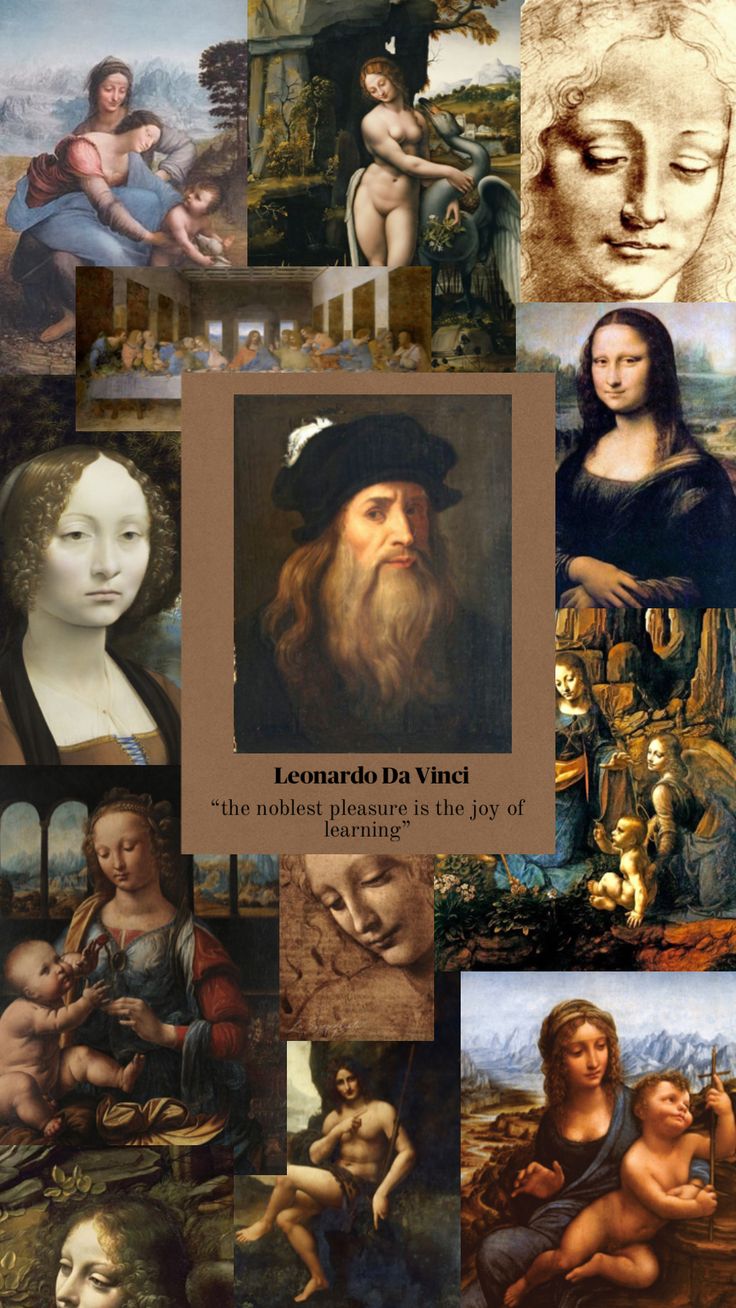Leonardo da Vinci: The Renaissance Genius Who Changed the World
Leonardo da Vinci (1452–1519) is widely regarded as one of the most brilliant and versatile figures in history. Known as a painter, inventor, architect, and scientist, da Vinci’s contributions to art, science, and technology have had an immeasurable impact on the world. His name is synonymous with creativity, curiosity, and boundless intellectual exploration. From his iconic painting Mona Lisa to his groundbreaking sketches of human anatomy, da Vinci’s legacy continues to inspire and shape modern society.
A Renaissance Genius: The Life of Leonardo da Vinci
Leonardo was born on April 15, 1452, in Vinci, Italy, a small town in the Tuscan region. He was the illegitimate son of a wealthy notary, Piero da Vinci, and a peasant woman, Caterina. From a young age, Leonardo demonstrated an extraordinary talent for drawing and an insatiable curiosity about the natural world. His early education in the arts was guided by the renowned painter and sculptor Andrea del Verrocchio, where he honed his skills and began to create works that would later become world-famous.
As a young artist, Leonardo moved to Milan, where he became a court painter and engineer. It was during this period that he created some of his most famous works, including The Last Supper (1495–1498) and Vitruvian Man (1490), a study of human proportions. However, da Vinci’s work was not confined to art; he also explored fields such as anatomy, engineering, and mechanics. His notebooks, filled with detailed sketches and ideas, reveal a mind that was ahead of its time, anticipating modern scientific discoveries and technological innovations.
Leonardo da Vinci’s Most Iconic Contributions
- Master of Art: Leonardo’s paintings, including Mona Lisa, The Last Supper, and Annunciation, are some of the most celebrated works in the history of art. His use of sfumato (a technique of blending colors and tones) and his study of human emotion set him apart from his contemporaries. Mona Lisa, with her enigmatic smile, has become one of the most recognized and analyzed paintings in the world.
- Scientific Innovations: Beyond his artistic genius, Leonardo’s scientific studies were groundbreaking. His observations of the human body, including muscle structure and bone alignment, advanced the field of anatomy. He meticulously studied the movement of water, the flight of birds, and the mechanics of the human hand, and his work laid the foundation for fields such as aerodynamics, hydraulics, and engineering.
- Technological Designs: Leonardo da Vinci’s notebooks are filled with sketches of inventions that were centuries ahead of their time. From the flying machine (an early design for a helicopter) to his sketches of early tanks and diving suits, da Vinci’s designs were visionary. Many of these inventions were never built during his lifetime, but they would later inspire generations of engineers and inventors.
- Engineering and Architecture: Leonardo also made significant contributions to engineering and architecture, including the design of bridges, fortifications, and machinery. His ability to seamlessly blend art and engineering helped him approach problems in innovative ways, making him a pioneer in both fields.
Daily Life and Impact of Leonardo da Vinci
Despite his monumental achievements, Leonardo da Vinci’s daily life was not always easy. He was known to be deeply introspective and often questioned his own abilities. He left many projects unfinished, as his restless mind constantly sought new challenges. His notebooks, filled with sketches and ideas, provide a glimpse into the thoughts of a man who was always looking to learn and innovate.
Da Vinci’s daily life reflected his insatiable curiosity. He would often spend hours in nature, observing the world around him, and he was known to have a keen interest in dissecting animals to study their anatomy. His diverse interests and constant experimentation made him a true Renaissance polymath, someone who sought to understand everything from art and science to the workings of the human mind.
In his later years, Leonardo moved to France, where he continued to work on scientific and artistic projects. He died on May 2, 1519, at the age of 67, leaving behind an extraordinary body of work that would inspire generations to come.
Facts About Leonardo da Vinci
- The Renaissance Man: Leonardo was known as the “Renaissance Man” due to his vast knowledge and expertise in various fields. His curiosity and desire to understand the world made him a true polymath.
- A Left-Handed Genius: Leonardo da Vinci was left-handed, and many of his notebooks were written in mirror image, possibly to avoid smudging the ink as he wrote.
- A Prolific Sketcher: Da Vinci filled over 13,000 pages of notebooks with sketches, diagrams, and notes on everything from anatomy to engineering. His ability to document his thoughts in such detail was unprecedented.
- Anatomy Expert: Leonardo conducted dissections of human bodies to better understand how the body worked, creating some of the most detailed anatomical sketches of his time.
- Never Fully Finished Works: Many of Leonardo’s projects, both artistic and scientific, were left incomplete, as he often moved on to new ideas and challenges.
Significance of Leonardo da Vinci’s Work
The significance of Leonardo da Vinci’s work lies not only in the masterpieces he created but also in his approach to learning. He believed that art and science were interconnected and that the understanding of one could enhance the understanding of the other. His ability to observe the natural world with such precision and detail changed the way humans viewed both art and science.
Da Vinci’s work in anatomy, for example, not only advanced medical knowledge but also influenced the way artists depicted the human form. His innovations in engineering and mechanics helped lay the groundwork for future technological advancements. And his artistic masterpieces continue to be celebrated for their beauty, technical skill, and deep emotional resonance.
FAQs About Leonardo da Vinci
1. What were Leonardo da Vinci’s greatest achievements? Leonardo’s greatest achievements include his iconic paintings such as Mona Lisa and The Last Supper, his groundbreaking studies in anatomy and engineering, and his visionary inventions.
2. How did Leonardo da Vinci contribute to science? Leonardo made significant contributions to anatomy, engineering, hydraulics, and aerodynamics. His detailed sketches and observations advanced scientific knowledge in many areas.
3. Why is Leonardo da Vinci considered a “Renaissance Man”? Leonardo da Vinci is considered a “Renaissance Man” because of his wide-ranging expertise in various fields, including art, science, engineering, and anatomy.
4. Did Leonardo da Vinci invent anything? Yes, Leonardo designed numerous inventions, including early versions of the helicopter, tank, and diving suit. Many of his designs were never built in his lifetime but inspired future inventors.
5. How did Leonardo da Vinci influence modern society? Leonardo’s contributions to art, science, and technology continue to influence modern society. His works are studied in schools and admired by people around the world, and his ideas laid the groundwork for many advancements in engineering, medicine, and art.
Conclusion: The Enduring Legacy of Leonardo da Vinci
Leonardo da Vinci’s influence on the world is immeasurable. As an artist, inventor, scientist, and engineer, his contributions have shaped countless fields and left a lasting legacy that continues to inspire and challenge us today. His interdisciplinary approach to knowledge, his curiosity, and his visionary ideas make him one of the most influential figures in history. Even centuries after his death, da Vinci’s work continues to shape our understanding of art, science, and the world around us, ensuring his place as one of history’s greatest minds.










